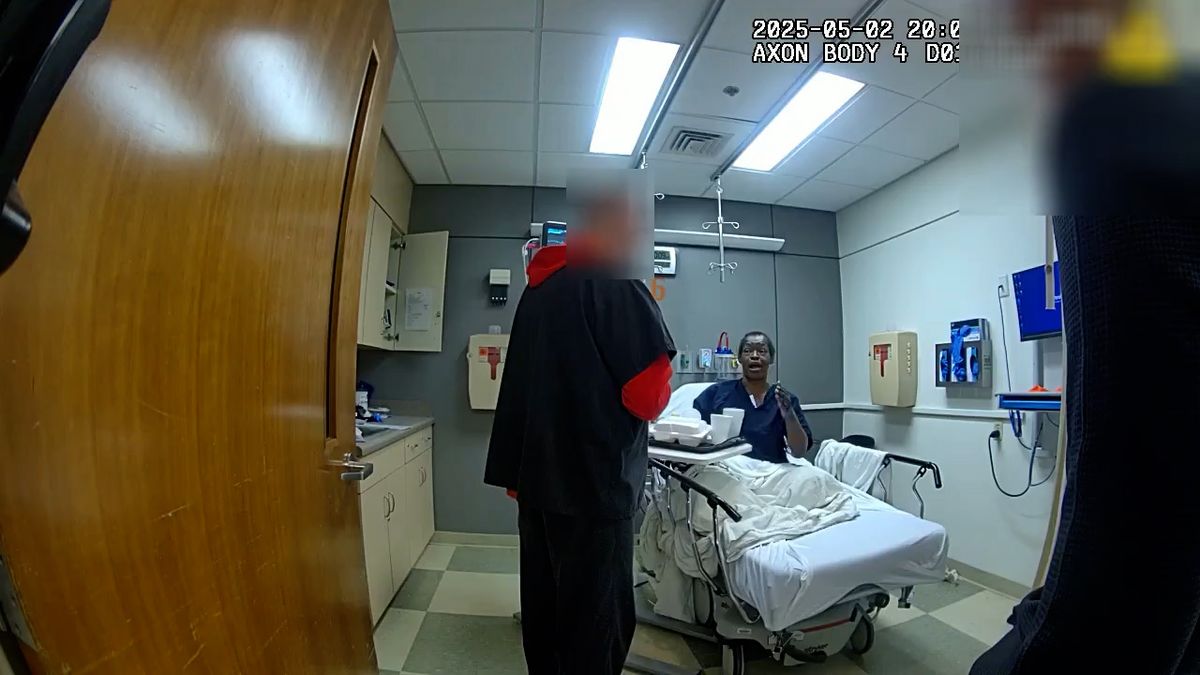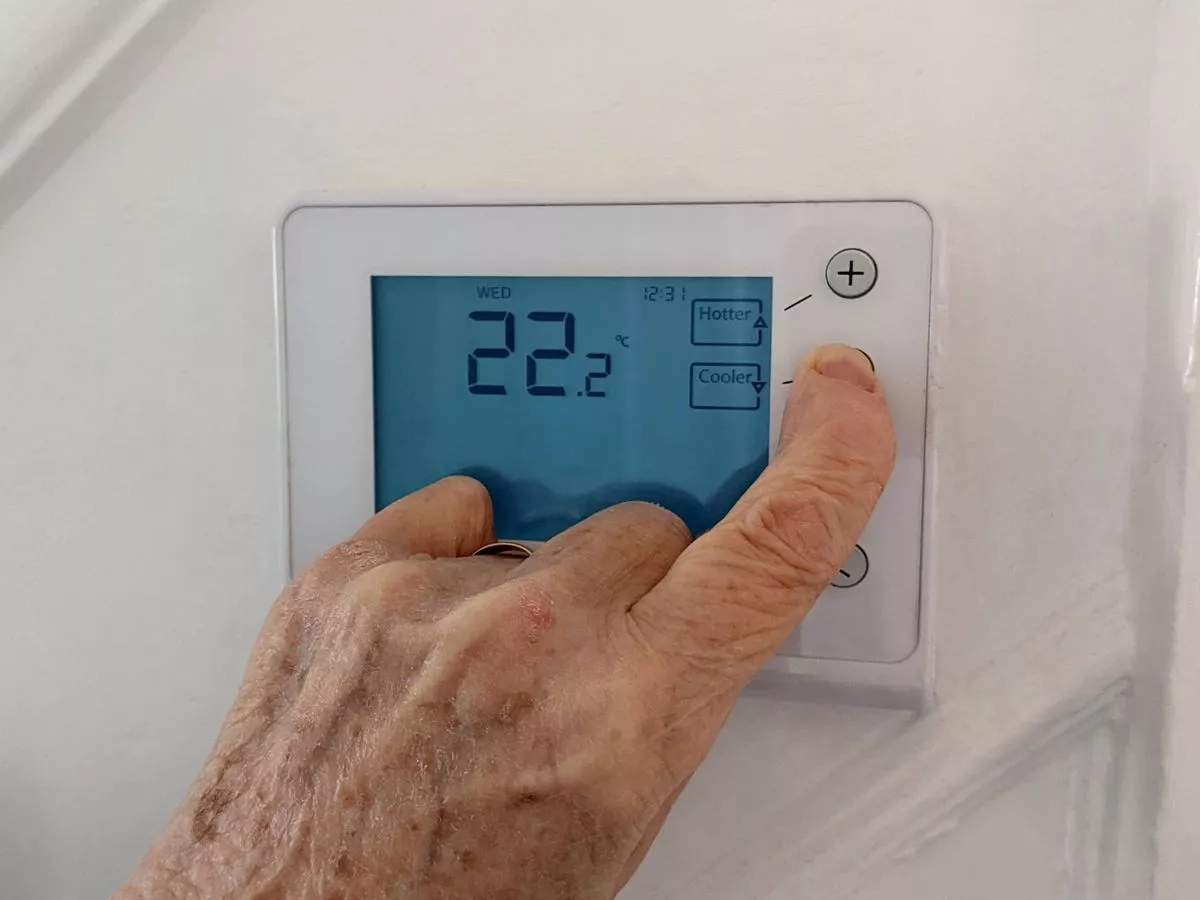Copyright The Marshall Project

Tasha Grant said the words until she could speak them no more. “I can’t breathe,” she repeated 23 times to MetroHealth Medical Center staff, three hospital police officers and the sheriff’s deputy guarding her. “You’re yelling, so you can breathe,” said one of the officers who forcefully restrained her. Grant gasped, moaned and settled motionless onto her stomach while handcuffed to a hospital bed. Her death was later ruled a homicide. The release Monday of four body camera videos capturing some of Grant’s final days is spurring more questions from her family and medical experts about the restraint, which an autopsy found caused her death. Only one other time in the past three years has the Cuyahoga County medical examiner made the same ruling. Two medical experts who reviewed the autopsy and video footage for The Marshall Project - Cleveland said it appears that medical staff failed to monitor Grant’s vital signs following the forceful restraint. Grant’s complaints of difficulty breathing, which she had voiced for days, were seemingly dismissed, they said. Attorneys representing Grant’s estate condemned the “tragic and completely unnecessary” death in a statement Tuesday. Grant was experiencing “a mental health crisis but rather than treat her with compassion and professionalism, officers physically restrained her ultimately causing” her death, they said. A Cuyahoga County spokesperson declined to comment. Grant, a 39-year-old double amputee with myriad health issues, arrived at the hospital from jail on May 2 after complaining of chest pain. She died three days later after a two-minute struggle with officers and the deputy. The force applied to Grant likely contributed to her death, the experts said, agreeing with the findings of the autopsy released in September. But the sedative injected into Grant’s arm while pinned down may have also slowed her breathing to the point of stopping her heart, the experts added. They questioned why the name of the drug used at that moment and its potential effects are not specified in the autopsy report. The pathologist for the Cuyahoga County Medical Examiner’s Office declined to discuss her findings. A MetroHealth spokesman also declined to comment on Grant’s death, citing privacy concerns. Eric Jaeger, a paramedic and national expert in the use of restraint, said the most alarming revelation from the videos is that Grant’s persistent pleas for help were seemingly ignored or dismissed. He cited the officer who used her yelling as proof that she could still breathe. “That’s some version of, ‘If you can speak, you can breathe,’ which we’ve said is a myth,” said Jaeger. “When someone’s saying, ‘I can’t breathe,’ you have to take that seriously.” A special prosecutor has been assigned to weigh criminal charges. Cuyahoga County Sheriff Harold Pretel has rejected demands by the family’s attorneys and community advocates to turn over the investigation to an independent agency. Grant, whose legs had been amputated years earlier, spent 15 days in the Cuyahoga County jail after an April arrest at the Cleveland Clinic on disorderly conduct charges. Her attempts to seek medical care at local hospitals have ended in criminal charges stemming from confrontations with staff 10 times since August 2024. She got into a dispute with the deputy who drove her from the county jail to MetroHealth Medical Center on May 2, body camera footage shows. Eventually, he uncuffed her from her hospital bed. Though it was late in the evening, he agreed to call her court-appointed attorney, whom she said she had yet to speak with. During the exchange, the deputy’s body camera video shows Grant expressing anger and worry. “I’m upset. I’m afraid. I’m scared,” she told a nurse. Just before lunchtime on May 5, Grant was having nothing to do with the second sheriff deputy assigned a shift to watch her that day. She tipped her meal tray onto the floor, video shows, speaking only to a nurse with whom she had a good rapport. They chatted like old friends. “I’m already going through a lot of s---. I’m f---ing handicapped,” Grant is heard telling the nurse. “The jail made me lose my f---ing legs. Don’t nobody know how the f--- I feel.” She missed her late mother, whom the nurse said she had also treated. Grant also wondered about her young child. “Right now, everyone is pissing me the f--- off. I don’t know where my kid is. OK? They took my baby from my baby dad. I don’t know where my baby at right now. … Don’t nobody know how I feel.” That evening, Grant sat on the floor, refusing to get back in bed. Three MetroHealth police officers pulled on blue latex gloves in the hallway. One turned to the latest deputy assigned to watch Grant that day. “She put herself on the floor?” the officer asked. “Yeah, she tried walking out,” the deputy replied. “She wasn’t cuffed before? Why not?” “Not sure,” said the deputy. “I just got here, and they said they weren’t using cuffs on her.” The MetroHealth police officer asked where staff would inject the sedative in Grant and for their permission to reapply handcuffs. They moved on Grant when she threatened to harm a nurse. Grant stopped gasping and went quiet in her bed. “I’m sure you’re not just supposed to leave the patient lying there without, at minimum, attaching devices to monitor pulse, respirations, and oxygen saturation,” said Paul Parker, a former police officer with three decades of investigating deaths for major medical examiners’ offices around the country. Kevin Davis, a retired Akron police detective who testifies in court on use-of-force cases, said the officers acted appropriately to ensure that Grant did not harm herself or staff. Police are instructed to roll handcuffed subjects onto their sides, he said, noting the officers’ efforts to do so in the video. There was no excessive force and too much time elapsed after the officers left the room for their actions to have caused Grant’s death, Davis concluded. Grant ultimately rolled herself onto her stomach, asked to be scooted up and closed her eyes. The Cuyahoga County Sheriff Department’s policy says people in its custody “should not be placed on their stomachs for an extended period” following a restraint to avoid interfering with their ability to breathe. What happened in the next 14 minutes after the deputy adjusted Grant’s handcuff and left with a nurse still in the room is unclear. When activated, body cameras capture recordings of the prior 30 seconds of video without audio. That’s consistent with the first three videos. But the video depicting when Grant was found unresponsive is missing at least the first 30 seconds of video without audio. Instead, it begins with a nurse hysterically screaming while trying to revive Grant. A county spokesperson would not answer questions about the discrepancy. “We don’t know what happened,” Jaeger, the expert in emergency medical restraint, said of the 14 minutes between the last two videos. “And it’s very frustrating.”



